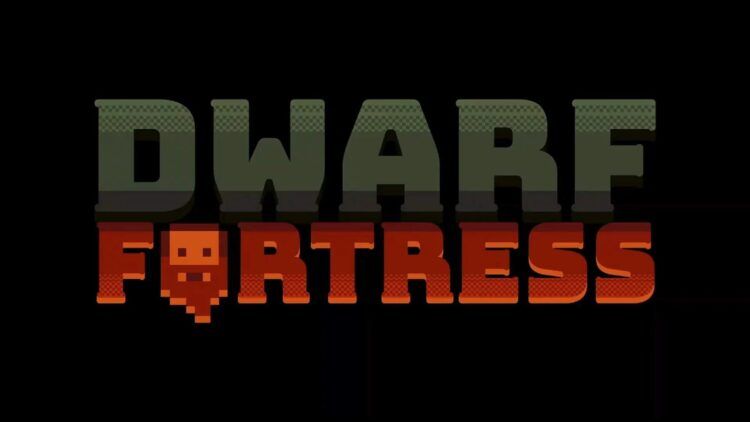Do you seek tips, items, strategies, and skills about Dwarf Fortress embark size? This guide is written for you!
The initial phase in the game is to embark on Dwarf Fortress, where you will begin your lengthy trip. You must choose a suitable place and bring a variety of valuable goods and dwarfs with you.
You’ll have a lot simpler experience if you choose the ideal embark site and stuff in Dwarf Fortress. When first starting the game, Dwarf Fortress embark size is essential.
The embarking procedure may be divided into two primary stages, each with its complexities. The first stage is to choose where to embark, which needs you to examine your biome, surroundings, neighbors, and many other factors. Following that, you must carefully plan by deciding which kind of expert Dwarves to carry along with various animals and supplies.
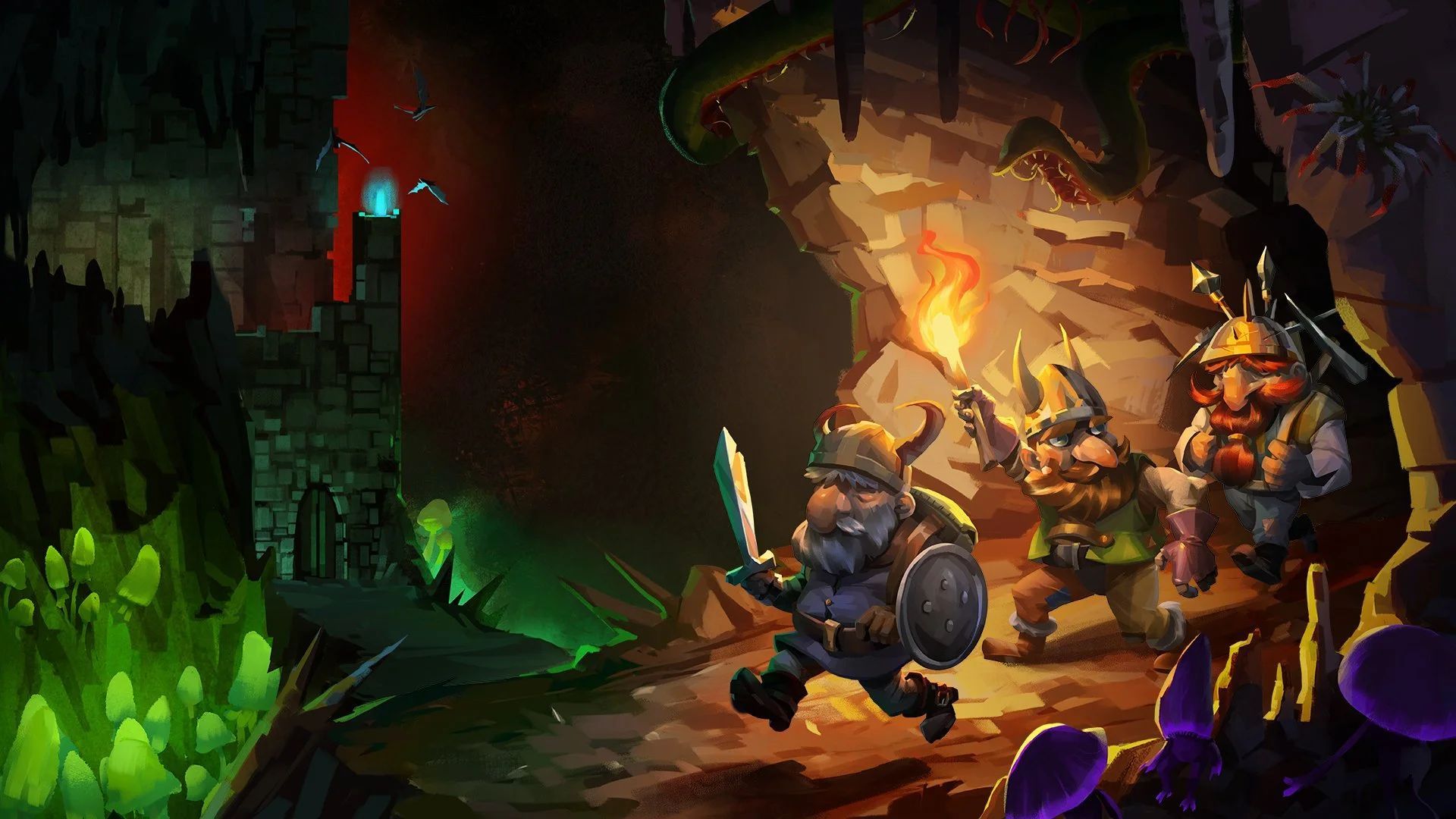
Dwarf Fortress embark size
Dwarf Fortress embark size is extremely crucial to consider. The first phase of the game is to embark on Dwarf Fortress, which contains the following fundamental steps:
- Choosing your civilization’s location.
- Assigning professional abilities to each of your dwarfs.
- Defining your initial resources and supplies.
- Begin your voyage into a new culture.
After you’ve selected an embark location, you’ll be prompted to select the size of your site. The number 3×3 is typically excellent; the higher you go, the more resource-intensive the game becomes. The maximum Dwarf Fortress embark size is normally 4×4 or 6×6 by default.
However, you can go into the settings and increase it to 16×16. But only if your system is capable of handling it. Most players will be able to cover a large amount of territory with 3×3 or 4×4.
Just bear in mind that after you’ve decided on a location and Dwarf Fortress embark size for your embarkation area, you won’t be able to modify your mind. As a result, thoroughly analyze all we provided about the site and make an informed decision.
Locations
Locations are important in Dwarf Fortress. The selected place is fixed for one game only and cannot be altered. As a result, you must exercise caution while selecting the location for your initial embark setup in the game. An embark may be constructed in many biomes, not just one. As a result, you will have a plethora of alternatives to pick from. A good embarkation point should contain the following features:
- Rivers are important because they provide a reliable source of food, such as fish, as well as a steady supply of water.
- Mountains provide metals, which are required for various constructions in the game.
- The climate is neither too hot nor too chilly.
- Embarkations near woods might provide a good supply of wood.
- Calm neighbors contribute to a quiet environment.
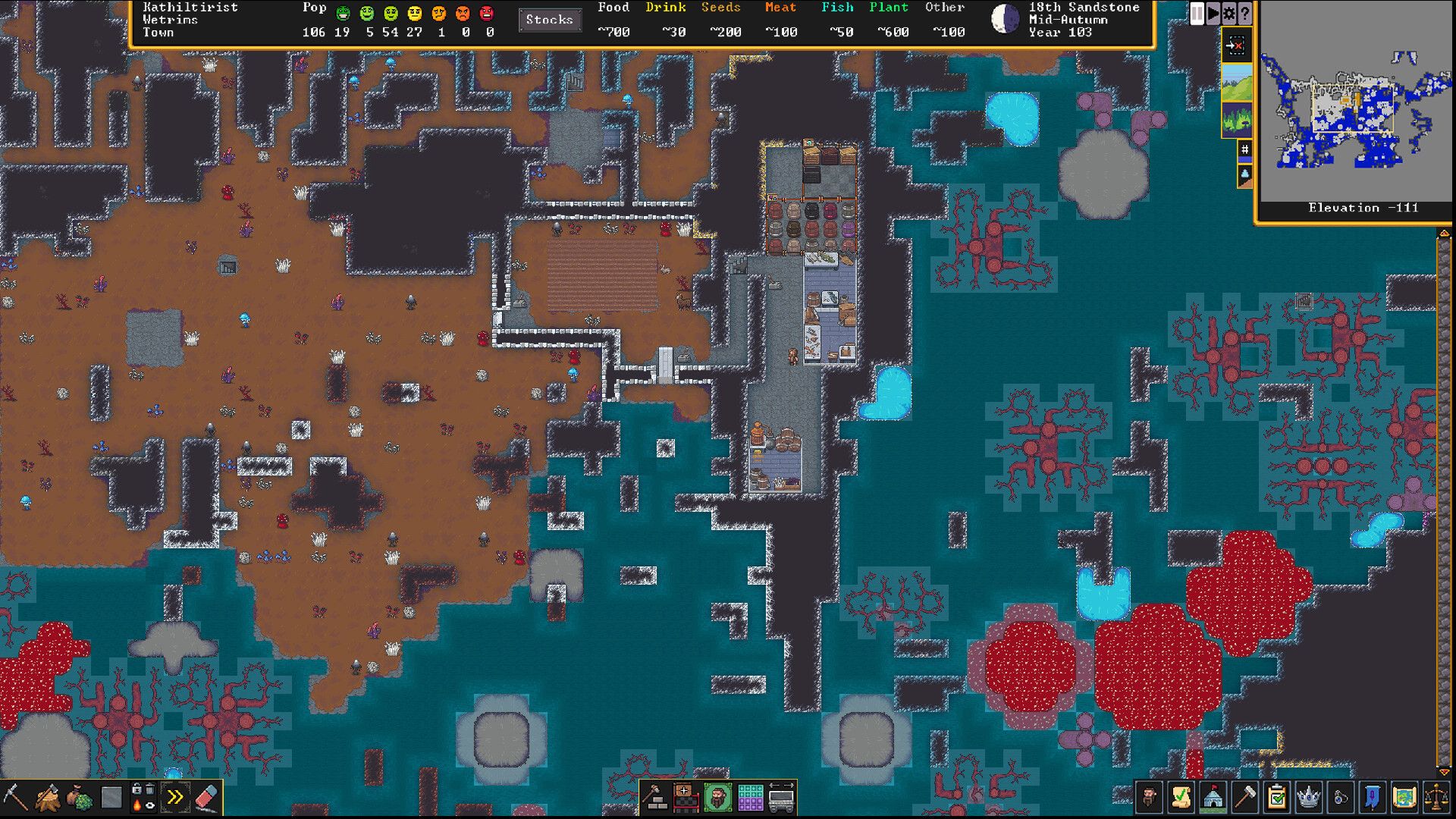
Biomes
There are several biomes to choose from. There are plains like Savannas and Shrublands, deserts like Badlands and Rocky Wasteland, oceans, swamps, lakes, and much more. Each of these biomes has its unique climate, vegetation, and amount of trees.
It is not just the biome that is important but also the things that exist inside and around it. For example, you may dwell in a forest with many of trees, but the climate may be too cold or hot, affecting your Dwarves.
Similarly, you may discover lush flora, the best seeds, and a large number of trees yet wind yourself near a saline ocean. Because your dwarves cannot drink salty water, you must find a technique to desalinate the water. However, at first, it may be too difficult and an unneeded nuisance that you may easily prevent by picking a better location.
Here are some common things to look for in your biome to have a better time:
- Choose a place with a higher concentration of wood, as wood will be a significant resource at first.
- Try to stay near bodies of water, such as lakes, waterfalls, or rivers.
- Agriculture relies heavily on vegetation. You don’t need much, but you’re safe as long as you have some type of flora.
- Each environment may be approached differently, but for novices, the best beginning climate will be warm since water supplies will be available all year.
Surroundings
Aside from choosing biome, the second thing you should consider is your surroundings since they might affect the plant life, animals, and creatures that will emerge in the biome that you’ve chosen. These plants or animals can range from calm to exceedingly hazardous and all in between.
Your surroundings are not restricted to certain biomes. You may have the same Biome in multiple spots on the map, but with distinct surroundings. Certain creatures and plants, on the other hand, require a certain biome with precise surroundings and conditions to spawn. If you’re new to the game, this may not be a big deal, but it’s something to think about after a while.
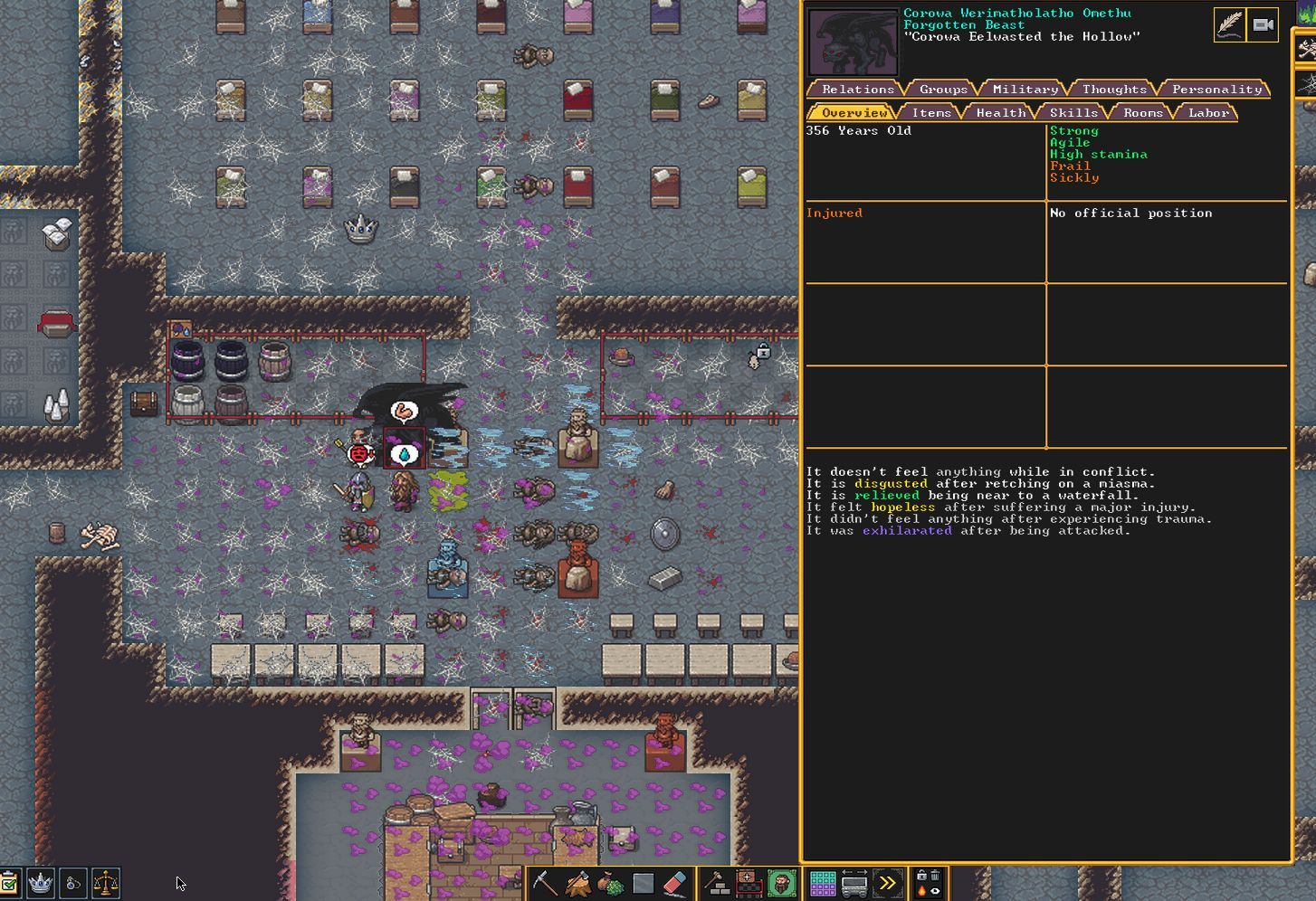
Furthermore, you may have an area or biome that straddles two different sorts of environments, which is generally the best-case scenario. You might have one location with serene surroundings and another with something wicked for a bit more action. Regardless, the environment may be divided into three groups.
Neighbors
Neighbors aren’t normally the first thing that comes to mind when starting, but they are one of the things that may make a difference. The most apparent recommendation is to avoid going to an island since many of your neighbors, particularly other dwarfs, will be unable to reach you. This will eventually decrease your ability to trade and get various sorts of resources.
The neighbor’s tab normally displays all of the nearest neighbors who can ultimately reach you. If civilization does not materialize, it will not be able to contact you while you are in that region.
You can also pick a faction for your dwarves, which will reflect their population and the places where they live. Dwarves will be more likely to visit you if you embark near certain regions. So, in summary:
- It is critical to evaluate your surroundings, especially if they are hostile or not, because Goblins may come in to take your things.
- An excellent location is close to Goblins, Humans, and Elves.
- Choose a faction for your dwarves and aim to embark somewhere where many of that faction’s dwarves are already located.
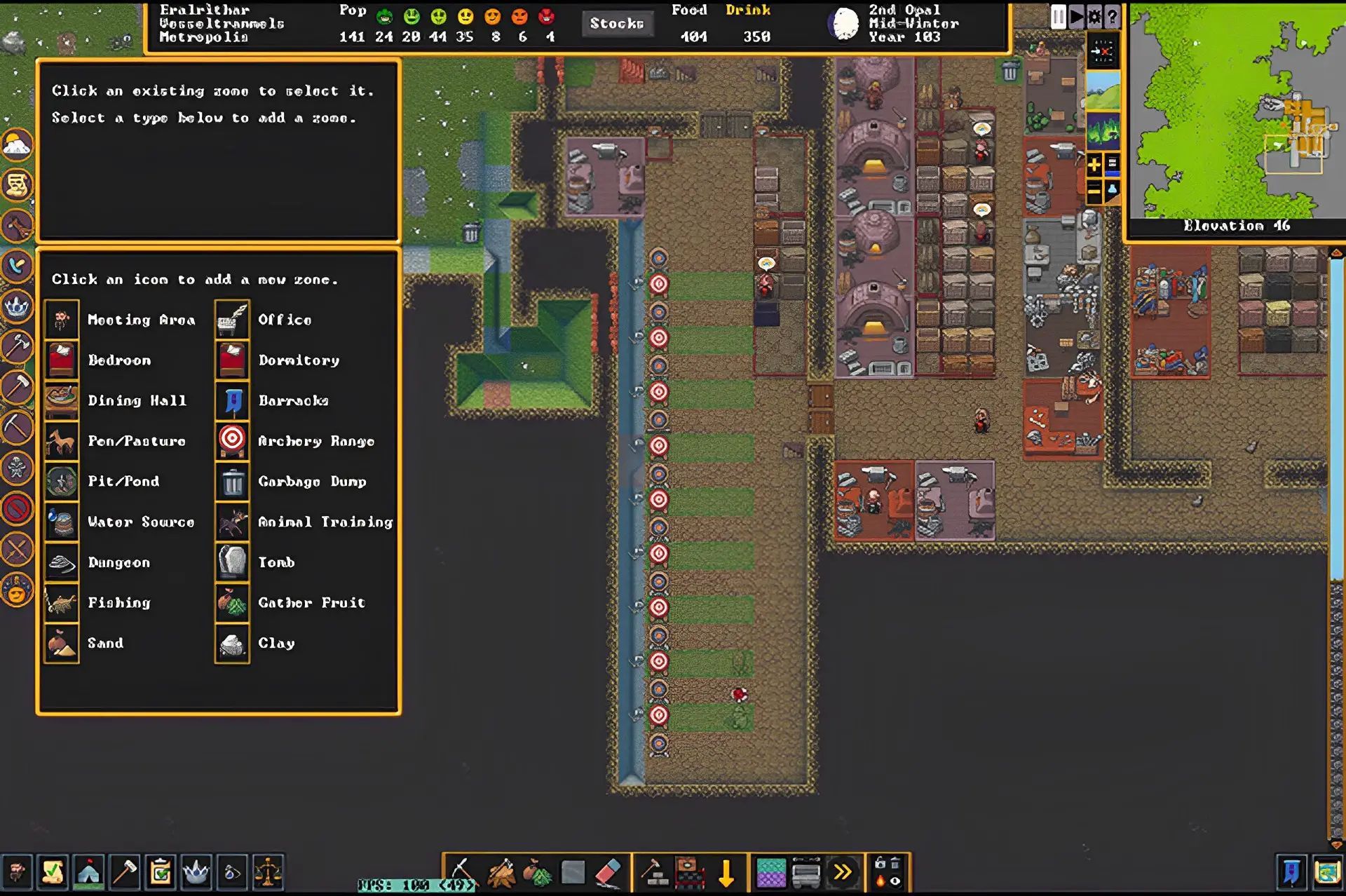
Items
For the most part, you don’t need to fiddle with the stuff you’ll be bringing with you. However, if you know ahead of time that you will be reliant on a particular skill early on, you may adjust your equipment accordingly. Here are some things you might want to adjust before you start:
- Pickaxe: You’ll start with two pickaxes, which should be plenty. Taking three pickaxes with you may be beneficial if you intend to mine and extend your territory as soon as you arrive.
- Alcohol: Your dwarves enjoy drinking alcohol. If you’re unclear about what else to bring, you should start by increasing the amount of booze you bring with you.
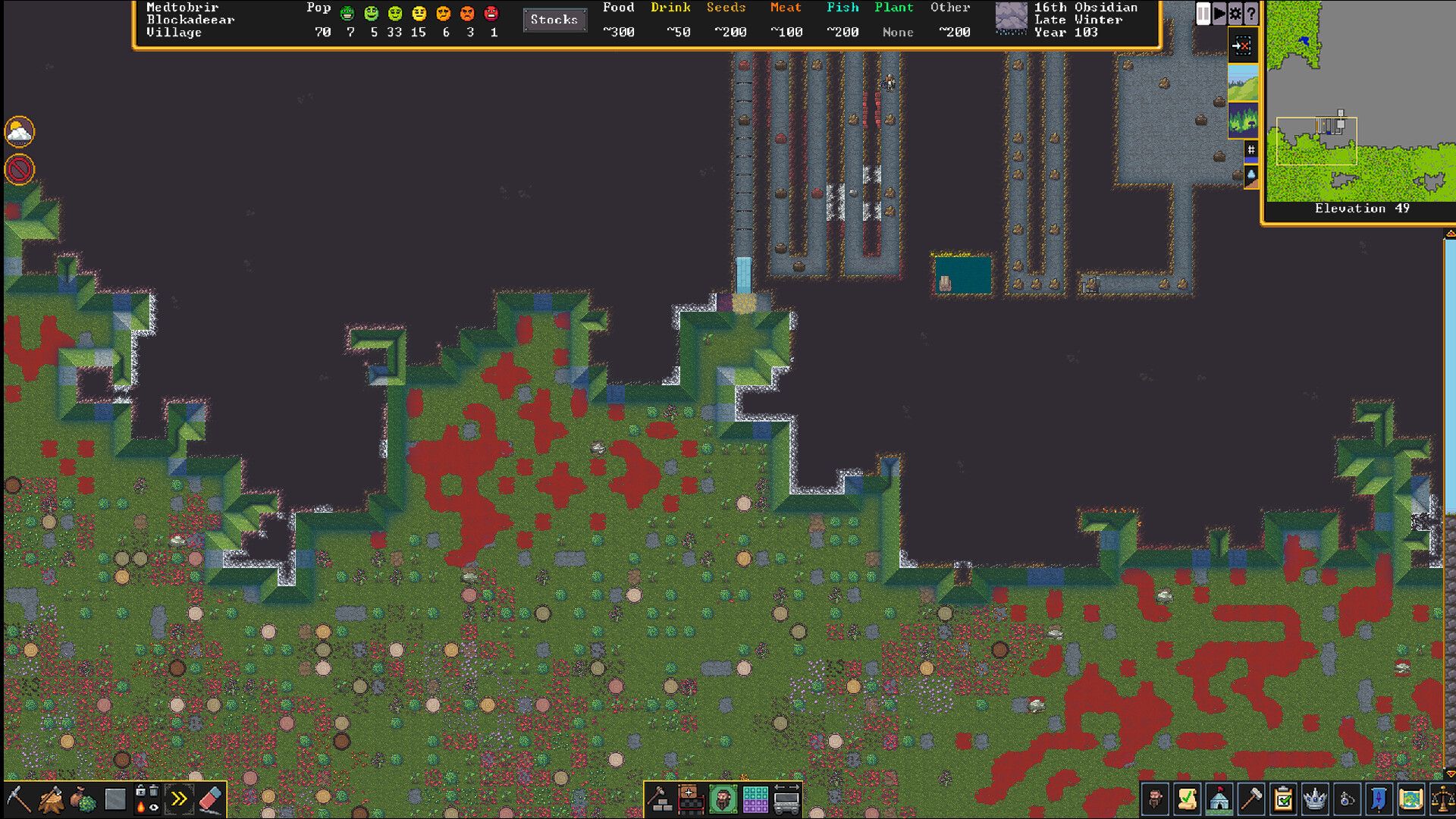
Dwarf Fortress embark size: Tips for a good setup
Consider the fundamental critical issues when constructing a leading settlement.
- The greatest embark setting in Dwarf Fortress revolves around a place with an adequate number of supplies, as well as being away from any malevolent sites or dangerous areas.
- Dwarf Fortress embark size is a critical consideration when starting the game.
- Avoid Aquifiers, which have a limitless supply of water and may flood your entire colony.
- The dwarf abilities should apply to the place you have picked for embarkation.
- Dwarf vocations should include a combination of manual labor and traditional jobs such as gathering food, constructing fortifications, and serving in the army.
- You can investigate the additional criteria for your civilization after you enter the environment you just built.
And on a final note, Dwarf Fortress is now available on PC via Steam and itch.io, so be sure to check it out! Find out how to set up a Dwarf Fortress archery range by visiting our guide!

